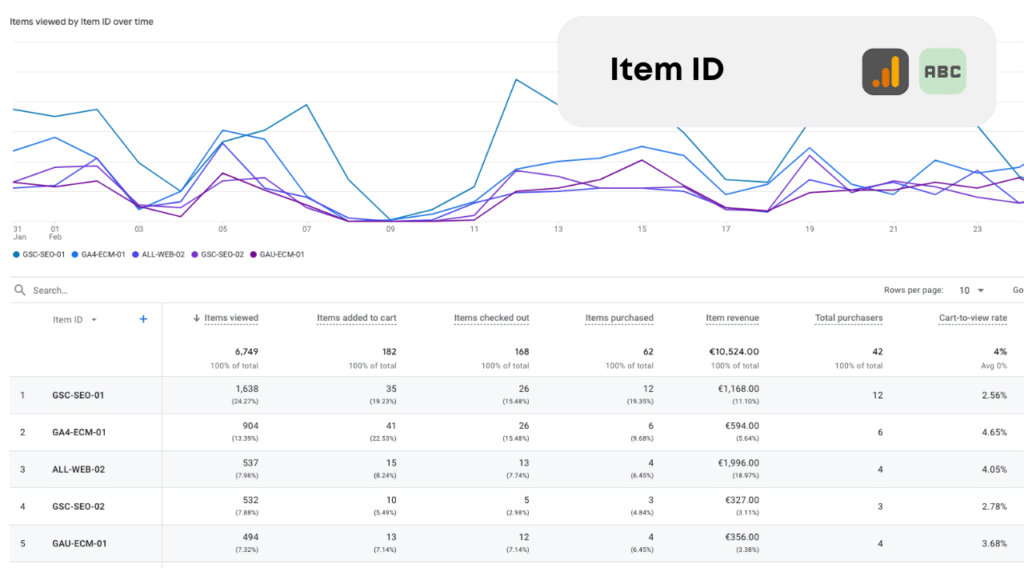Table of Contents
Overview
- Data Source: Google Analytics 4 (GA4)
- Type: Text/String
What is Item ID in Google Analytics 4?
Item ID refers to the unique identifier assigned to a product or item within an eCommerce event in Google Analytics 4. This ID is typically specified by the user and can take various forms, such as a stock-keeping unit (SKU) code, ‘SKU_12345’, for example. Item ID is derived from the item_id parameter at the item level in an eCommerce tracking setup.

Description
Item ID is a critical dimension for tracking and analyzing product-specific actions and transactions in eCommerce analytics. It enables precise tracking of product views, additions to cart, purchases, and other interactions by associating each action with a unique product identifier. This granularity allows for detailed product performance analysis, inventory management, and personalized marketing efforts.
Use Cases
- Inventory Management: Utilize Item ID data to monitor stock levels and sales performance of individual products, facilitating efficient inventory replenishment and optimization to meet demand without overstocking.
- Sales Analysis and Reporting: Analyze sales data by Item ID to identify top-selling and underperforming products, enabling data-driven decisions on product promotions, discontinuations, or development of new items.
- Personalized Recommendations: Leverage Item ID tracking to understand individual user preferences and purchase history, allowing for the creation of personalized product recommendations that enhance the shopping experience and potentially increase sales.
- Marketing Campaign Targeting: Use insights from Item ID performance to target marketing campaigns more effectively, focusing on promoting products with high demand or introducing promotions for slower-moving inventory to stimulate interest.
- Product Catalog Optimization: Review Item ID analytics to understand how different products contribute to the overall performance of your eCommerce platform, informing decisions on catalog adjustments, bundling, or pricing strategies.

